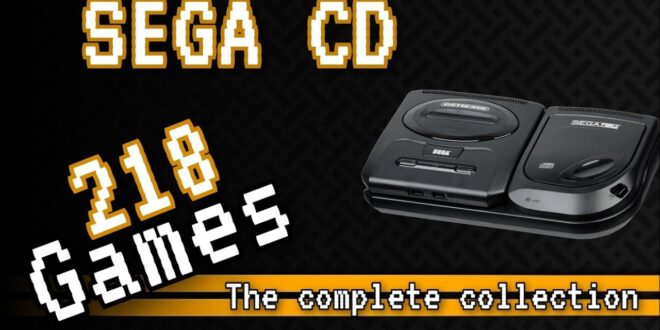(HEY YOU!! We hope you enjoy! We try not to run ads. So basically, this is a very expensive hobby running this site. Please consider joining us for updates, forums, and more. Network w/ us to make some cash or friends while retro gaming, and you can win some free retro games for posting. Okay, carry on 👍)
The Sega CD: An Ambitious Leap into CD-ROM Gaming
The Sega CD, known as Mega-CD outside North America, was Sega’s ambitious foray into the world of CD-ROM technology in gaming. From the moment I tore open the wrapping paper one Christmas morning to reveal a Sega CD, the year it was released, my gaming experiences were forever transformed. That moment marked the beginning of a new chapter, one filled with richer soundtracks and more complex storytelling in games, and I’ve been a devoted fan ever since.
Specifications
The Sega CD was an add-on to the Sega Genesis and boasted the following specs:
- CPU: Motorola 68000 processor running at 12.5 MHz
- RAM: 6 MB (including 2 MB of word RAM, 512 KB of PCM waveform memory, and 128 KB of CD-ROM data cache memory)
- Graphics: Capable of displaying 64 colors on screen from a palette of 512
- Audio: PCM sound source and a CD-DA capability, which allowed for high-quality audio tracks
- Storage: CD-ROM format with a capacity of up to 700 MB
History
Sega introduced the Sega CD in Japan in 1991, and it reached North American shores in 1992. The system aimed to capitalize on the vast storage capacity of CDs, which was a significant leap from the cartridge-based Genesis. Sega’s intent was to enhance the gaming experience with better graphics, full-motion video, and high-fidelity audio.
System Review
Design and Hardware
As an add-on, the Sega CD attached to the bottom of the original Genesis model or sat beside the later Genesis models, creating a dual-system setup. This design choice was distinctive, if not bulky, and required its own power supply.
Gaming Library
The Sega CD’s library was a mix of enhanced Genesis titles, new franchises, and experimental games that utilized the CD’s capabilities. Games like “Sonic CD,” “Night Trap,” and “Shining Force CD” showed the potential of the format with their improved visuals, cutscenes, and soundtracks.
Audiovisual Experience
The audio capabilities of the Sega CD were a standout feature. CD-quality audio tracks in games like “Ecco the Dolphin CD” provided an immersive experience that cartridge systems couldn’t match. The graphics improvements, while modest compared to later systems, were still a step up from the Genesis with the ability to display more colors and render video.
Legacy and Personal Reflection
The Sega CD’s lifespan was relatively short, and its success was limited by a high price point, marketing missteps, and a game library that couldn’t fully justify the investment for many. Yet, its legacy is significant as it laid the groundwork for future CD-based consoles.
On a personal note, the Sega CD’s impact was indelible. Receiving it as a Christmas gift the year it debuted was a formative moment in my gaming life. The cinematic experience of games like “Final Fight CD” and the thrill of exploring “Lunar: The Silver Star” have been etched in my memory. It was a glimpse into the future of gaming, and I’ve been captivated ever since.
Conclusion
The Sega CD may not have been the commercial success Sega hoped for, but it was a trailblazing piece of hardware that pushed the boundaries of what was possible in home gaming. Its contribution to the evolution of video games is undeniable, paving the way for the CD-dominated gaming landscape of the late 90s and early 2000s. For more information and a trip down memory lane, check out the Sega CD library and read up on its history. For those of us who experienced it first-hand, the Sega CD will always represent an exciting era of innovation and the joy of gaming discoveries every time we powered on that motorized disc tray.
 Retro Replay Retro Replay gaming reviews, news, emulation, geek stuff and more!
Retro Replay Retro Replay gaming reviews, news, emulation, geek stuff and more!




